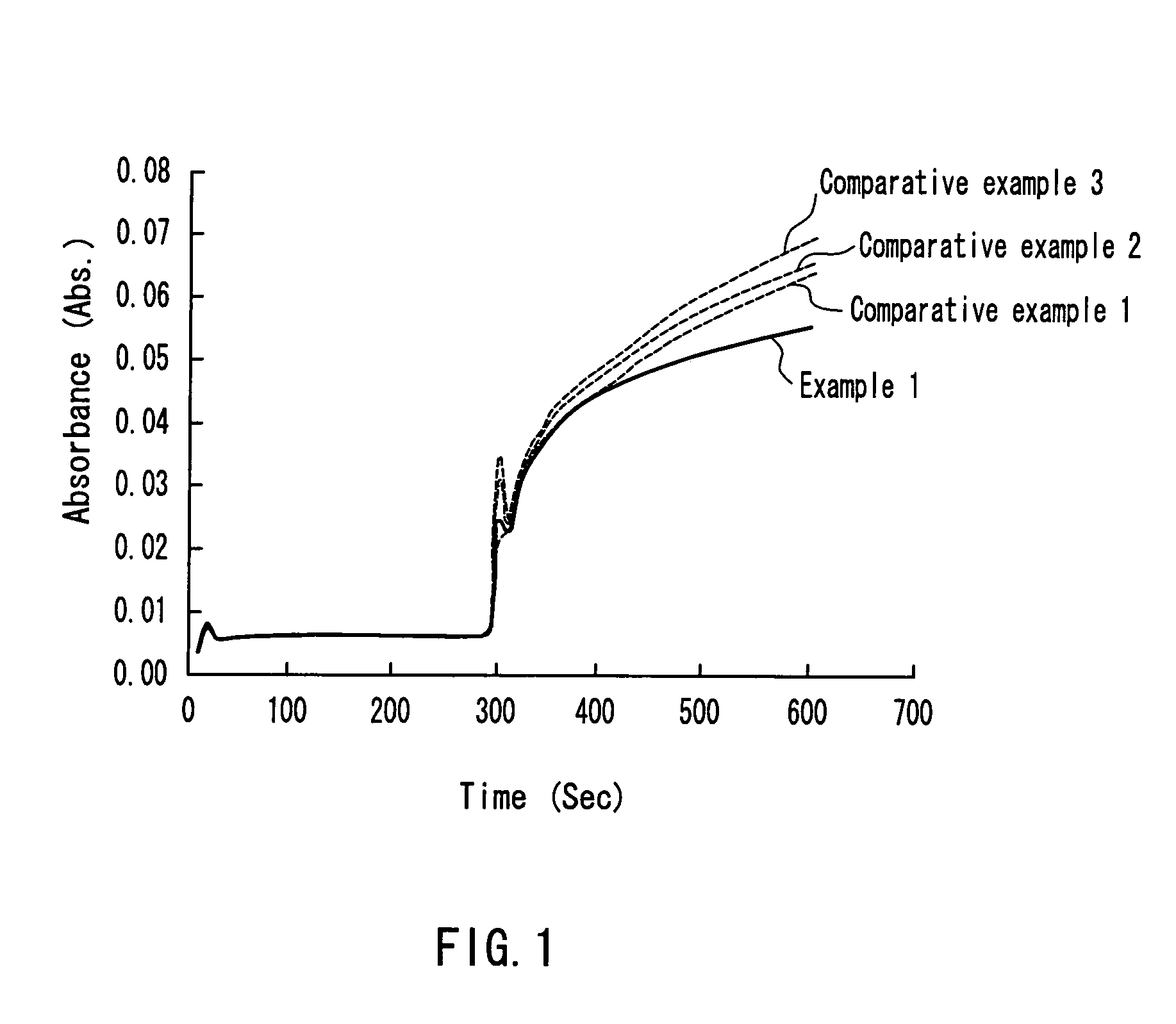Method of preventing wrong color formation of n-(carboxymethylaminocarbony)-4,4′-bis(dimethylamino) diphenylamine sodium, reagent solution for the method, and measurement method employing the method
a technology of carboxymethylaminocarbonyl and diphenylamine, which is applied in the field of preventing erroneous color formation of n(carboxymethylaminocarbonyl)4, 4′bis (dimethylamino) diphenylamine sodium salt, can solve the problems of color-developing substrate shortage in the redox reaction, increase in background, etc., and achieve the effect of preventing erroneous color development and preventing er
- Summary
- Abstract
- Description
- Claims
- Application Information
AI Technical Summary
Benefits of technology
Problems solved by technology
Method used
Image
Examples
examples
(Treatment Solution A)
[0097]A-1: 40 mmol / l CHES buffer (pH 9.5) containing 7 g / l (12 mmol / l) of polyoxyethylene (9) lauryl ether (PEGLE)[0098]A-2: 40 mmol / l CHES buffer (pH 9.5) containing 50 g / l (85 mmol / l) of PEGLE
(Treatment Solution B)
[0099]A mixture containing 5 mmol / l of 2-(4-iodophenyl)-3-(2,4-dinitrophenyl)-5-(2,4-disulfophenyl)-2H-tetrazolium salt (product name WST3, manufactured by Dojindo Laboratories) and 1.5 mmol / i of sodium azide was prepared and incubated at 50° C. for 24 hours. Then, 3 ml of this mixture, 1 ml of a metalloproteinase (ARKRAY, Inc., 10,000 KU / 1), 1 ml of MES buffer (50 mmol / l, pH 5.5), NaCl solution (500 mmol / l), and 3 ml of purified water were mixed with each other. The resultant mixture was used as a treatment solution B.
[0100]
(Treatment Solution C)C-1:DA-6480μmol / lTris buffer (pH 7.0)300mmol / lFAOD (ARKRAY, INC.)30KU / lPOD100KU / lC-2:DA-641000μmol / lTris buffer (pH 7.0)300mmol / lFAOD (ARKRAY, INC.)30KU / lPOD100KU / l
(Procedure)
[0101]Blood was centrifuged (30...
PUM
| Property | Measurement | Unit |
|---|---|---|
| temperature | aaaaa | aaaaa |
| pH | aaaaa | aaaaa |
| color | aaaaa | aaaaa |
Abstract
Description
Claims
Application Information
 Login to View More
Login to View More - R&D
- Intellectual Property
- Life Sciences
- Materials
- Tech Scout
- Unparalleled Data Quality
- Higher Quality Content
- 60% Fewer Hallucinations
Browse by: Latest US Patents, China's latest patents, Technical Efficacy Thesaurus, Application Domain, Technology Topic, Popular Technical Reports.
© 2025 PatSnap. All rights reserved.Legal|Privacy policy|Modern Slavery Act Transparency Statement|Sitemap|About US| Contact US: help@patsnap.com

